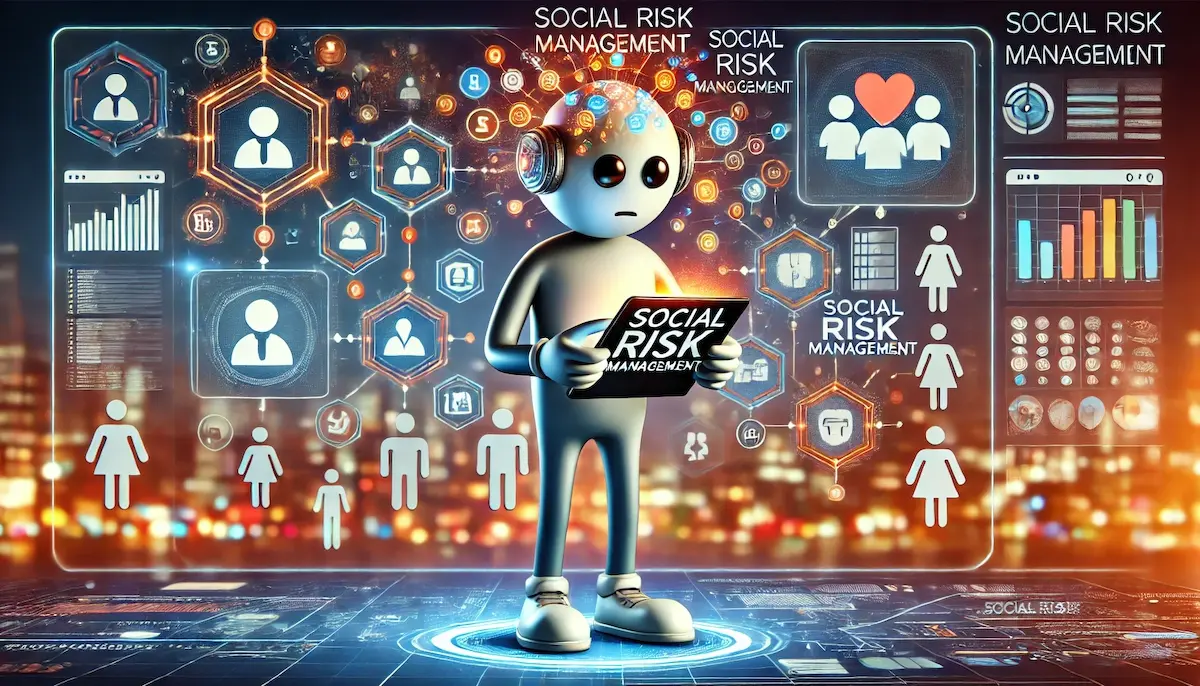Social risk management involves identifying, assessing, and mitigating risks that arise from social factors which can impact an organization’s reputation, operations, and overall success. These risks can stem from issues related to employee relations, community impact, human rights, and social responsibility. Effective social risk management helps organizations navigate societal expectations, build trust with stakeholders, and achieve sustainable growth. Let’s explore the key components and benefits of social risk management.
The Role of Social Risk Management
The primary goal of social risk management is to ensure that an organization’s operations positively impact society and mitigate any potential negative effects. This involves managing risks associated with labor practices, community relations, diversity and inclusion, and corporate social responsibility. By proactively addressing these risks, organizations can foster a positive social impact and enhance their long-term viability.
Key Components of Social Risk Management
Several key components contribute to successful social risk management:
1. Risk Identification
Identifying potential social risks is the first step in the process. This includes recognizing risks related to employee well-being, labor rights, community impact, and social equity. Social audits, stakeholder consultations, and impact assessments can help identify these risks.
2. Risk Assessment
Once risks are identified, they must be assessed to determine their potential impact and likelihood. This involves evaluating the severity of each risk and its potential consequences on the organization and society. Tools such as social impact assessments, risk matrices, and stakeholder analysis can be used for this purpose.
3. Risk Mitigation
Risk mitigation involves developing strategies to reduce or manage the identified social risks. This can include implementing fair labor practices, enhancing community engagement, promoting diversity and inclusion, and ensuring ethical sourcing. Effective mitigation strategies help minimize negative social impacts and enhance social responsibility.
4. Risk Monitoring
Continuous monitoring of social risks is essential for ensuring that risk management strategies remain effective. This involves regularly reviewing risk exposures, assessing the effectiveness of mitigation measures, and making adjustments as needed. Real-time monitoring tools and key risk indicators (KRIs) can aid in this process.
5. Compliance Management
Ensuring compliance with social regulations and standards is a critical aspect of social risk management. This involves staying informed about regulatory changes, implementing necessary controls, and maintaining accurate records. Compliance reduces the risk of legal penalties and reputational damage.
6. Reporting and Communication
Clear and timely reporting of social risk information to stakeholders is crucial for transparency and accountability. This includes providing regular updates on risk exposures, mitigation efforts, and any changes in the social risk landscape. Transparent communication builds trust and supports strategic planning.
7. Social Governance
Effective social governance involves establishing a clear framework for social risk management responsibilities and decision-making. This includes defining the roles and responsibilities of the board of directors, executive management, and social responsibility teams. Strong governance ensures accountability and oversight.
Benefits of Social Risk Management
Implementing effective social risk management practices offers numerous advantages for organizations:
1. Enhanced Reputation
Strong social risk management practices build confidence among investors, customers, and other stakeholders. Demonstrating a commitment to social responsibility enhances the organization’s reputation and trustworthiness.
2. Improved Compliance
Ensuring compliance with social regulations and standards reduces the risk of legal penalties and reputational damage. This fosters trust with regulators, customers, and partners.
3. Increased Employee Engagement
By promoting fair labor practices, diversity, and inclusion, organizations can enhance employee satisfaction and engagement. Engaged employees are more productive, loyal, and likely to contribute to the organization’s success.
4. Better Community Relations
Proactive social risk management fosters positive relationships with local communities. This can lead to support and collaboration on initiatives, enhancing the organization’s social license to operate.
5. Risk Reduction
Effective social risk management minimizes the likelihood and impact of social incidents, reducing potential financial losses and disruptions. This helps protect the organization’s bottom line and ensures operational stability.
6. Strategic Advantage
Organizations that effectively manage social risks can gain a strategic advantage over competitors. By addressing social concerns and demonstrating social responsibility, businesses can differentiate themselves and appeal to socially conscious consumers.
7. Sustainable Growth
Integrating social risk management with strategic planning ensures that organizations consider the long-term social implications of their decisions. This supports sustainable growth and helps achieve long-term business success.
Conclusion
Social risk management is essential for protecting an organization’s reputation, operations, and long-term viability. By implementing robust social risk management practices, businesses can enhance reputation, improve compliance, and foster positive relationships with stakeholders. As societal expectations continue to evolve, effective social risk management will remain crucial for navigating uncertainties and ensuring sustainable growth.
Blockfine thanks you for reading and hopes you found this article helpful.
